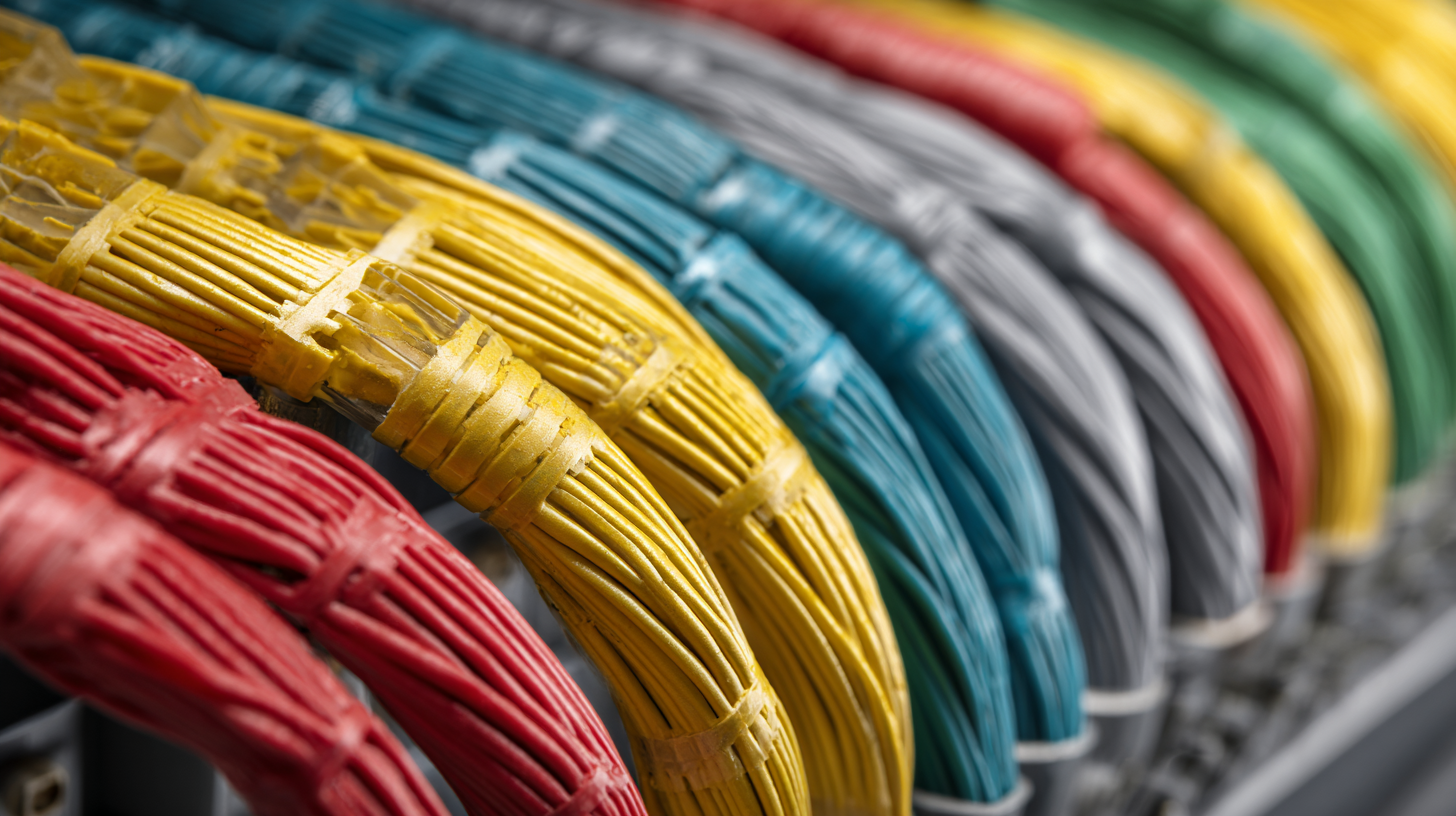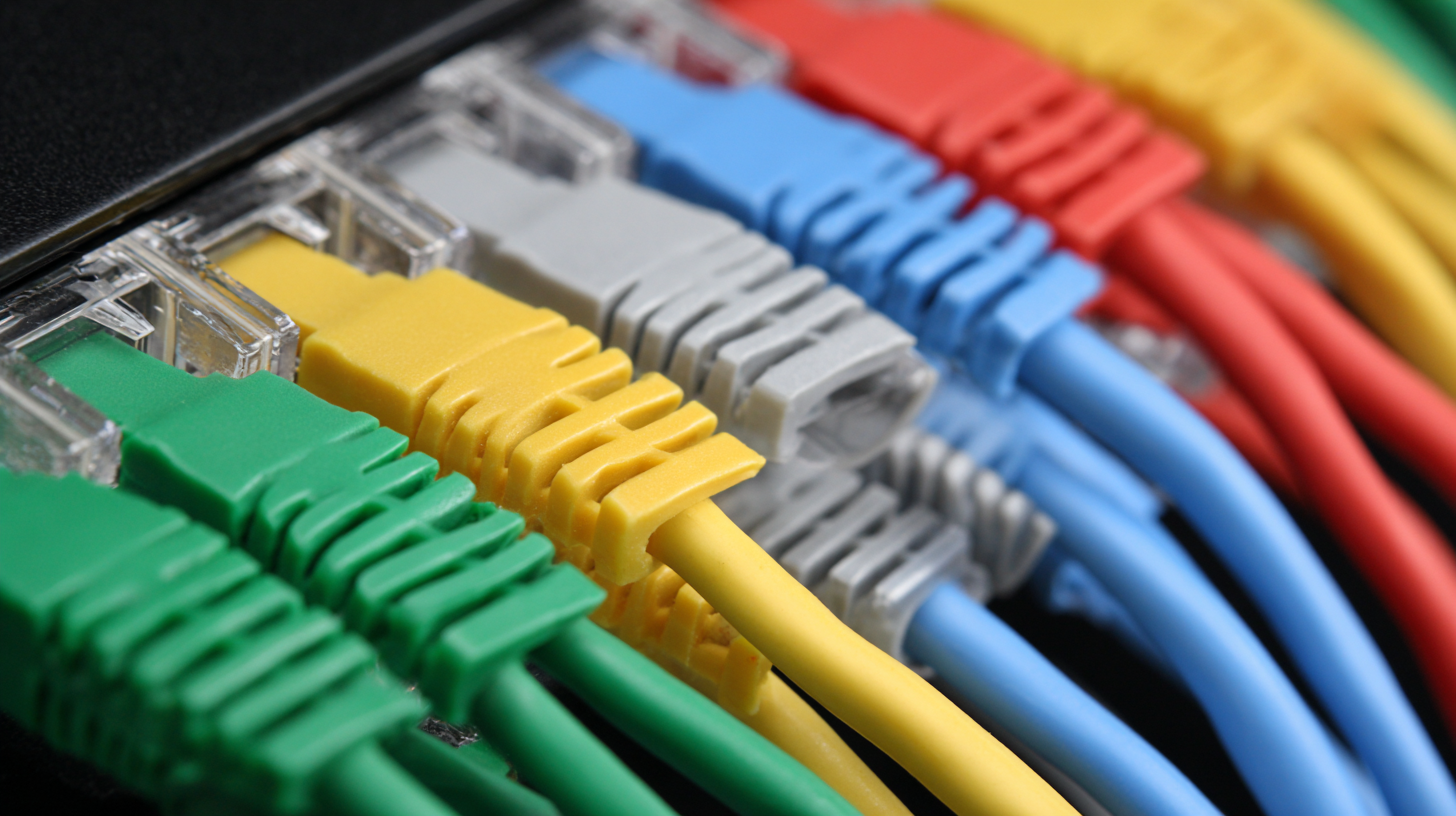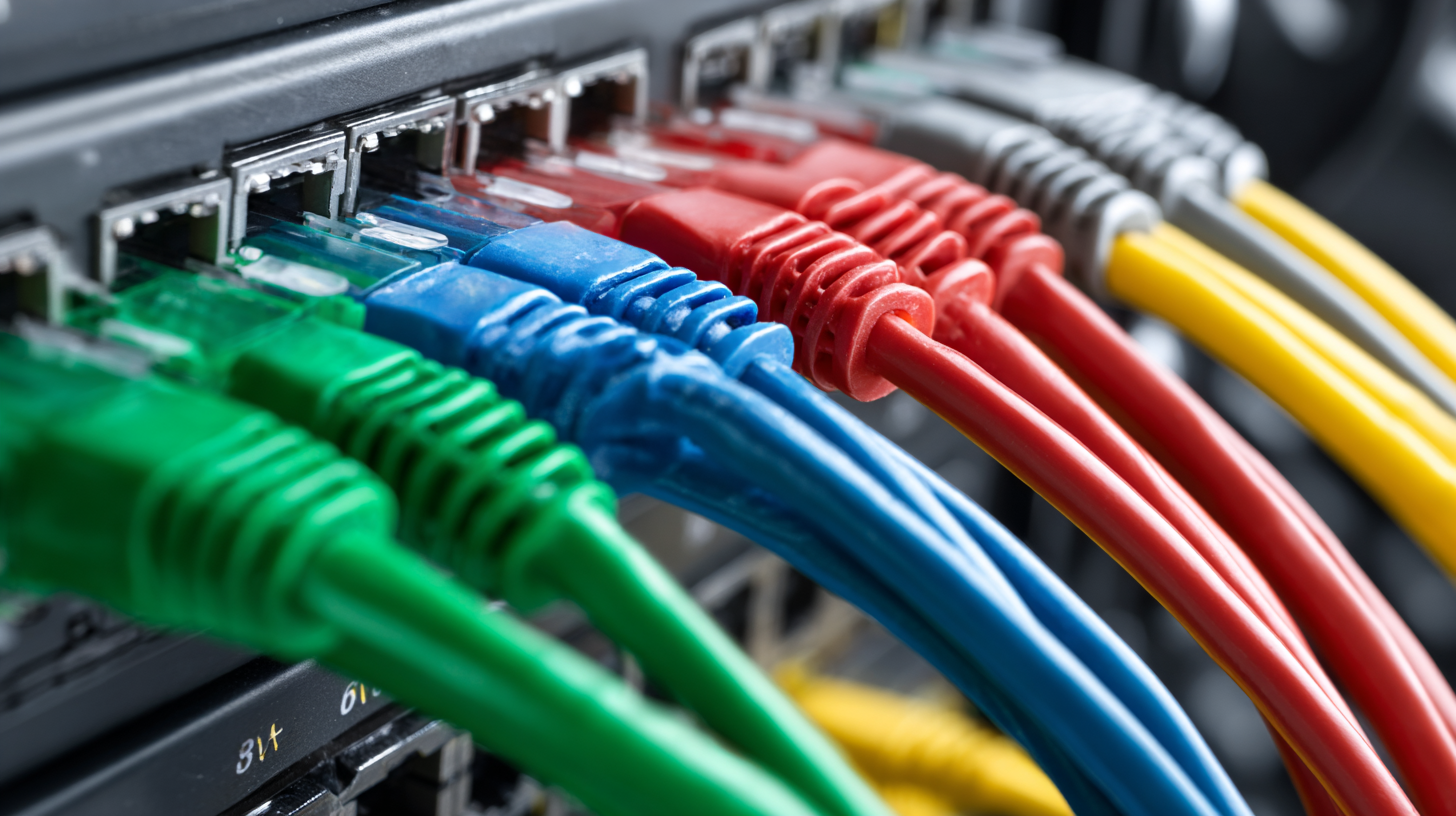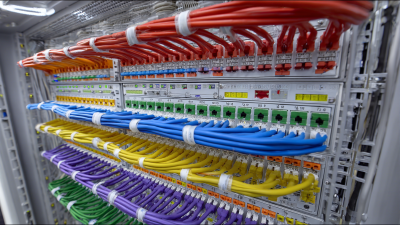7 Essential Tips for Choosing the Best Cat 6 Bulk Cable for Your Network Needs
As our reliance on high-speed internet continues to grow, selecting the right networking components becomes crucial, and one of the key elements in achieving optimal network performance is the choice of cabling. Among the various options available, Cat 6 bulk cable stands out for its ability to support higher data rates and bandwidths, making it ideal for modern networking demands. According to a report by the International Telecommunication Union, the global demand for higher bandwidth connectivity is projected to increase by 25% annually through 2025, emphasizing the need for robust wiring solutions. Whether you're building a new network infrastructure or upgrading an existing system, understanding the nuances of Cat 6 bulk cable can significantly impact your overall network efficiency and reliability. This blog will explore seven essential tips to help you choose the best Cat 6 bulk cable tailored to your unique network needs.

Understanding Cat 6 Bulk Cable: Key Characteristics and Specifications
When considering Cat 6 bulk cable for your network needs, it's essential to understand its key characteristics and specifications to make an informed decision. Cat 6 cables are designed to support bandwidths of up to 250 MHz, making them ideal for high-speed data transfer essential for modern applications. They can transmit data at speeds of up to 10 Gbps over distance of 55 meters, which is significantly more efficient than their predecessors. This is particularly crucial for home networks where video streaming, online gaming, and large file transfers are commonplace, as a wired LAN often outperforms wireless connections in terms of reliability and speed.
Moreover, when selecting the right bulk cable, pay attention to the construction quality, such as whether the cable is unshielded twisted pair (UTP) or shielded twisted pair (STP), as this can impact the cable’s performance in environments with potential interference. According to industry reports, investing in high-quality cabling is projected to yield significant improvements in network performance, with wired solutions typically offering lower latency and higher security compared to wireless alternatives. As reliance on high-speed internet continues to grow, understanding these specifications becomes paramount for anyone looking to optimize their network infrastructure.
7 Essential Tips for Choosing the Best Cat 6 Bulk Cable for Your Network Needs
| Feature | Description | Importance |
|---|---|---|
| Cable Type | Unshielded Twisted Pair (UTP) or Shielded Twisted Pair (STP) | Important for noise reduction and overall performance |
| Length | Available in various lengths from 100 ft to 1000 ft | Choose based on your specific wiring needs |
| Cable Ratings | Look for categories like Cat 6, Cat 6a | Higher categories provide better performance |
| Jacket Material | PVC or Low Smoke Zero Halogen (LSZH) | Safety and environmental considerations |
| Connector Type | RJ45 connectors | Ensures compatibility with network devices |
| Bandwidth | Up to 250 MHz for Cat 6 | Higher bandwidth for faster data transmission |
| Price | Varies based on quality and features | Balance cost with quality and performance needs |
Factors to Consider When Selecting Cat 6 Bulk Cable for Your Network
 When selecting Cat 6 bulk cable for your networking needs, there are several factors to consider that can significantly affect performance and overall reliability. First and foremost, cable quality is paramount; look for cables that meet or exceed the Cat 6 standard. This ensures that they can handle high-speed data transfers with minimal interference.
Additionally, consider the cable's construction materials. A solid copper conductor is preferable over copper-clad aluminum, as it provides better conductivity and lower attenuation, which is essential for maintaining signal strength over longer distances.
When selecting Cat 6 bulk cable for your networking needs, there are several factors to consider that can significantly affect performance and overall reliability. First and foremost, cable quality is paramount; look for cables that meet or exceed the Cat 6 standard. This ensures that they can handle high-speed data transfers with minimal interference.
Additionally, consider the cable's construction materials. A solid copper conductor is preferable over copper-clad aluminum, as it provides better conductivity and lower attenuation, which is essential for maintaining signal strength over longer distances.
Another critical factor is the cable's jacket rating, which indicates its fire resistance and durability. For indoor installations, a simple PVC jacket may suffice, but in commercial or high-traffic areas, you may want to opt for a more robust jacket such as LSZH (Low Smoke Zero Halogen) to reduce toxicity in the event of a fire. Lastly, take into account the cable length you require and the specific environment in which it will be installed. If you anticipate future expansion or higher bandwidth requirements, opting for a longer cable or one that supports future technologies can ultimately save you time and money in the long run.
Comparing Shielded vs. Unshielded Cat 6 Cable: Which is Right for You?
When it comes to selecting the proper Cat 6 bulk cable for your networking needs, one crucial decision is whether to go with shielded or unshielded cables. Shielded Cat 6 cables are designed with an additional layer of protection that helps to reduce electromagnetic interference (EMI) and crosstalk. This makes them an ideal choice for environments with a lot of electronic equipment or where high data integrity is required, such as offices or production facilities.
On the other hand, unshielded Cat 6 cables are more commonly used in residential settings. They are generally less expensive and simpler to install, making them a popular choice for home networks, where the risk of interference is low. If you're looking for a cost-effective solution and do not have significant EMI issues, unshielded cables may be the best option for you.
When choosing between shielded and unshielded Cat 6 cables, consider the environment in which the cable will be installed. If you expect potential interference from nearby devices, opt for shielded cables to ensure reliable performance. Conversely, for standard home or less congested areas, unshielded cables can provide sufficient quality at a lower price point. Additionally, pay attention to the length and quality of the cable to maintain optimal network performance.
Comparison of Shielded vs. Unshielded Cat 6 Cable
Determining the Right Length and Quantity of Cat 6 Bulk Cable for Your Setup
When choosing Cat 6 bulk cable for your network needs, determining the right length and quantity is crucial for optimizing performance. Based on recent trends, the 2-meter length has gained significant popularity among consumers, particularly noted in sales reports from markets in Japan and the United States. These reports highlight consumer preferences for convenience and efficiency, emphasizing the importance of adapting to regional buying habits when selecting cable lengths.
Moreover, as countries like Japan continue to expand their infrastructure—adding approximately 70,000 utility poles annually—it's essential to consider how cable length can impact installation and maintenance. In contrast, China is investing heavily in underground cabling to increase safety and reliability. A study from industry analysts reveals that the domestic cable sector is expected to grow, focusing on high-capacity and energy-efficient solutions. The trend towards undersea cables is also rising significantly, driven by the increased demand for data transmission across global networks, with projections indicating a compound annual growth rate of over 10% in the next few years. This shift highlights the necessity of strategic planning when opting for Cat 6 bulk cables, ensuring that you have the appropriate lengths and quantities to meet current and future network demands.
Common Brands and Manufacturers of Cat 6 Bulk Cable: What to Look For
When selecting the best Cat 6 bulk cable for your network, it’s crucial to consider the brands and manufacturers that consistently provide high-quality products. Leading brands such as Belden, Priced Right, and M/G/ Electronics have established reputations in the networking community. Look for manufacturers that offer solid warranties and technical support, as this can be indicative of their commitment to quality and customer satisfaction.
In addition to brand reputation, it's essential to evaluate the specifications of the Cat 6 cable. Pay attention to factors such as cable construction (solid vs. stranded), shielding (unshielded twisted pair vs. shielded twisted pair), and the maximum transmission distance. A solid conductor cable is generally preferred for long runs, while stranded cables offer more flexibility for patching. Make sure the cables you choose meet the latest standards for performance and reliability, as this ensures your network will be supported for years to come.
Another important tip is to consider the installation environment. If your network will be exposed to potential interference or harsh conditions, opt for cables with a higher level of shielding or those rated for outdoor use. This attention to detail not only prolongs the lifespan of the cable but also maintains network performance even in challenging settings.

Related Posts
-

10 Reasons Why Cat 6 Bulk Cable is Essential for Your Network Installation
-

How to Choose the Right UTP Cat 6 Cables for Your Network Needs
-

Innovative Solutions for Optimizing Enterprise Networking Efficiency
-

7 Best Practices for Selecting the Right Patch Panel for Your Network
-

What is the Importance of Network Fiber Optic Cable in Modern Communication
-

10 Amazing Benefits of Using Network Patch Cables for Your Business
